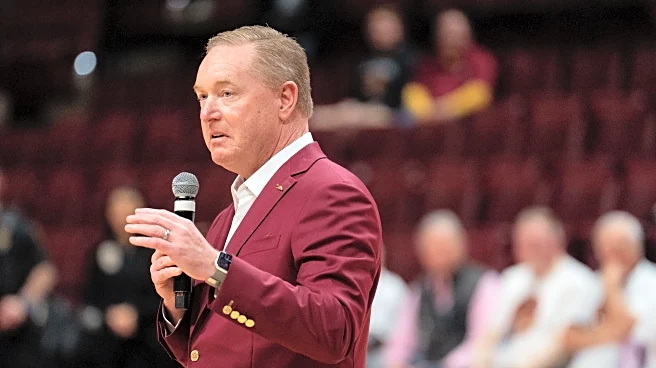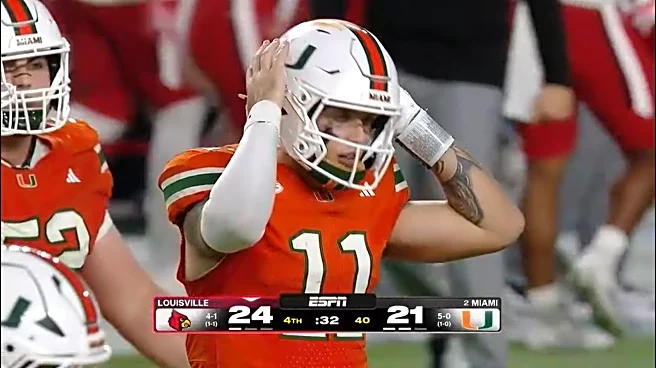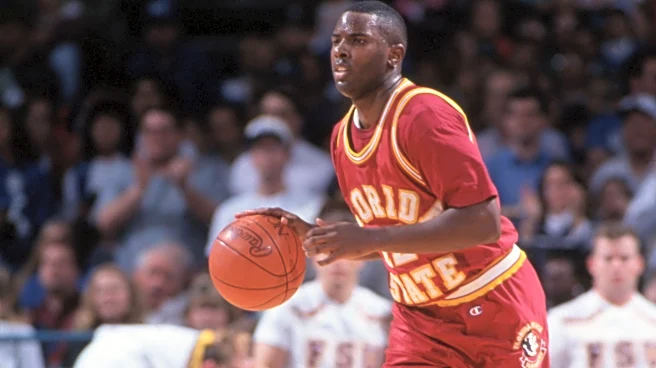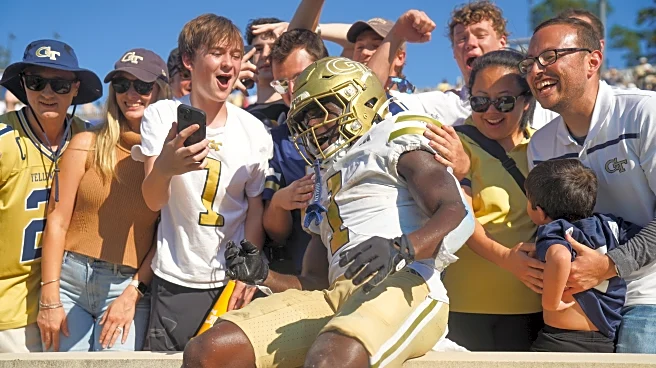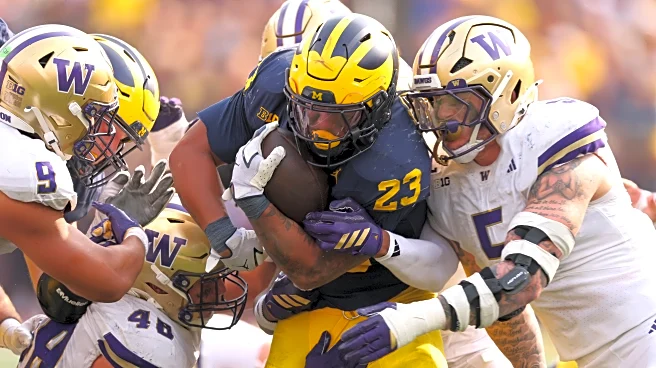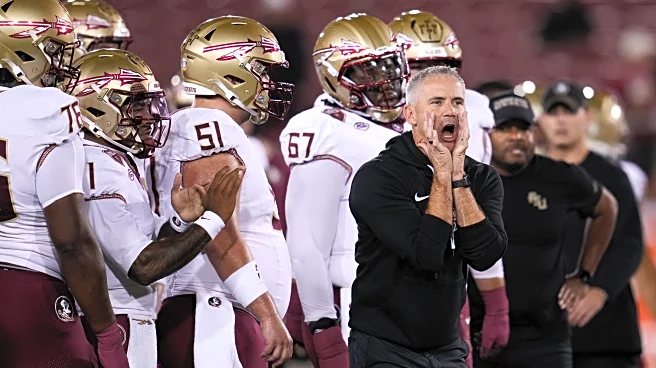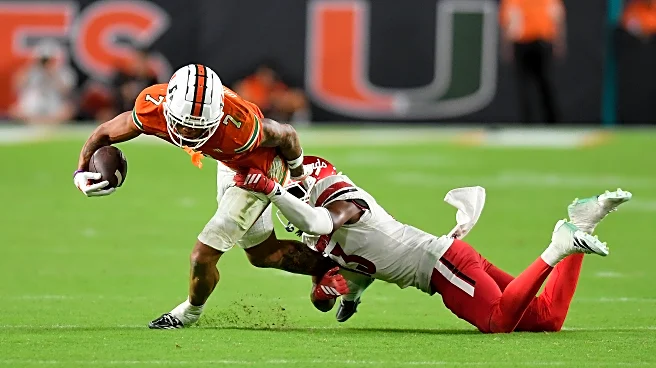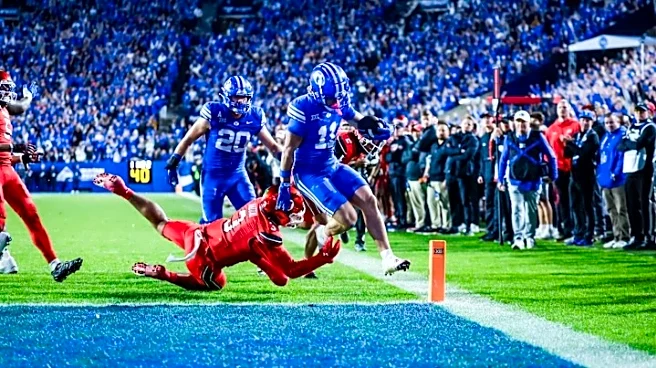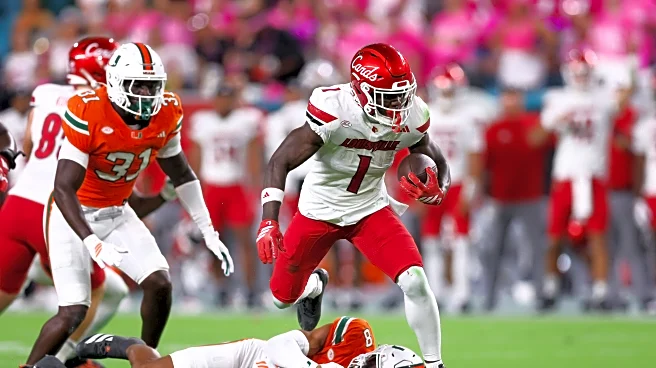On Monday evening, Florida State cut the ribbon on its brand-new football-only facility. Michael Alford and Mike Norvell stood shoulder-to-shoulder, less than 24 hours after CBS Sports’ Chris Hummer reported
that Norvell knew his coaching future was up in the air and Alford was forced to issue a statement endorsing him.
Oh the irony.
In an effort to try and put FSU on equal footing with the upper echelon of the college football world, Alford funneled hundreds of millions of dollars into the new facility. The building offered the promise that the Seminoles could compete with the big boys of the sport, and that the athletic department finally understood they were behind and was investing to catch up.
But the building also offers proof of something else: the Florida State athletic department does not have enough money. If they did, Mike Norvell would not be the head coach.
While the construction of the new football-only facility is not the reason why FSU does not hold the funds to fire Norvell, it is a great place to start. Multiple sources have reported that the combined cost of the facility and the Doak Campbell Stadium renovations is around $400 million. One look through Florida State Athletics Association’s financial statements from the fiscal year ending in June ‘24 shows where the money went.
Florida State reported $83,432,936 in noncurrent assets, displaying that 90% of their total assets are tied up in nonliquid capital projects, a fancy way of saying the facility and the football stadium. The athletic department also reported $53,112,952 in total liabilities, resulting in a mostly nonliquid total net position of $40,532,088, which, as noted, is the money being tied up in two concrete buildings that at the time were under construction.

If the books do not already seem cooked enough, the discussion and analysis section leaves no room for debate. The audit confirmed that liabilities increased by $50.8 million due to “outstanding loans,” including “$17.8 million in accounts payable related to construction contracts.” Later, under current assets, the FSU athletic association held only $455,000 in liquid cash and $6,184,545 in investments, which could easily be converted into liquid cash. In other words, broke.

The fun train rolled on later in the document as Florida State received three different line items from Seminole Boosters. There were two main contributions from FSU’s fundraising arm, $26,512,364 in capital assets transferred and $13,998,793 in capital and related financing activities, which is most likely related to the packages purchased for the upgrades in the new stadium. In total, Seminole Boosters spent around $40,000,000 on financing these two massive construction projects in just the 2024 fiscal year.
I wonder what Florida State could do with that.

Worst of all, these numbers are based on only one year and one account. These did not include lawsuit money, coaches’ salaries, or other upgrades happening around the athletic department (it also did not include all money given by Seminole Boosters).
Syracuse University’s Knight-Newhouse College Athletics Database paints an event more sobering view of Florida State’s financial picture. Florida State’s total debt related to athletics has exploded from $21,496,402 in 2019 to $119,115,385 in 2024. Some of that is due to how the debt was reported between Seminole Boosters and FSU Athletics but the debt is still far larger than ACC median athletic debt of $97,482,658 and the FBS median of $70,347,830.00. FSU has spent over $11 million just in serving debt in each of the last three years.
Even if the 2023 playoff snub had not happened, the day was always going to come when Florida State needed to challenge the ACC’s Grant of Rights and attempt to leave the conference before 2036. Florida State is more dependent on television rights revenue than any other major football power. The university has had to finance its athletics program through debt because of the resource gap between FSU and comparable programs.
Florida State didn’t keep ticket prices and required donations among the lowest of major programs out of the goodness of Bobby Bowden’s heart. It did so because the economics have never been in Florida State’s favor.
FSU is the only school whose modern incarnation began after World War II to win a national championship, a remarkable achievement that should not be understated. FSU simply doesn’t have the same base of multi-generational base of doctors, lawyers, and STEM professionals with the disposable income to make five figure annual commitments for premium football seating that schools like Florida, Ohio State, and Notre Dame do. Nor does it have a T. Boone Pickens or Phil Knight-level sugar daddy to cover an athletic director’s every whim.
Tomahawk Nation has repeatedly noted how Tallahassee’s geographic isolation from the rest of Florida limits FSU’s ability to tap into its broader statewide alumni network. Anyone traveling from outside the Panhandle faces a choice between an eight hour round trip drive or spending $1,500 or more for a weekend stay at an overpriced hotel.
The local economy in Tallahassee also isn’t capable of fully supporting a top-tier football program. The state government is the primary engine of the area’s economy and the main employer of FSU alumni who choose to remain in Tallahassee. Even by government pay standards, Florida’s pay is low. A recent ZipRecruiter analysis showed that Florida has the lowest average salary for government employees of any state in the country.
AD Michael Alford gambled that he could finance a top-tier football program with barely enough resources, and it backfired spectacularly on him. Now, the 2025 FSU team gets to spend six weeks in their brand new facility talking to their agents about transferring before playing in a half-empty stadium with improved bar seating.
Speaking of terrible decisions, how about the construction of the 2025 team? To try to fix what was already broken, Alford doubled down on Norvell by buying out both of his coordinators’ contracts and allowing the head coach to bring in two new ones. FSU was on the hook for $7.7 million when it fired former OC Alex Atkins and DC Adam Fuller under buyout terms (though that figure is certainly lower now with offset language in their agreements as Fuller is now with the Chargers, Atkins with LSU), this coming in the same year that FSU finally finished off paying Willie Taggart’s buyout ($4.25 million annually from 2019 to Jan. 2024).
In their place, Florida State dished out more expensive contracts to OC Gus Malzahn and DC Tony White to try and course correct what went wrong in 2024, while hiring five combined assistants who worked under those two at their previous institution. On Saturday, Florida State scored 13 points against Stanford, and on Sunday, the Seminoles ranked behind Wake Forest in total defense.
More bad contracts, more money that will be wasted to get out of them.
Alford’s statement on Monday all but confirmed that Florida State will have no choice but to throw more cash into the sewer. Once that happens, all sports will be affected, not just football, due to the insane fiscal irresponsibility and a program without the financial backing of other major institutions. Hopefully, the Seminoles will use this as a lesson for being honest with themselves instead of trying to fit a square peg into a round hole.
